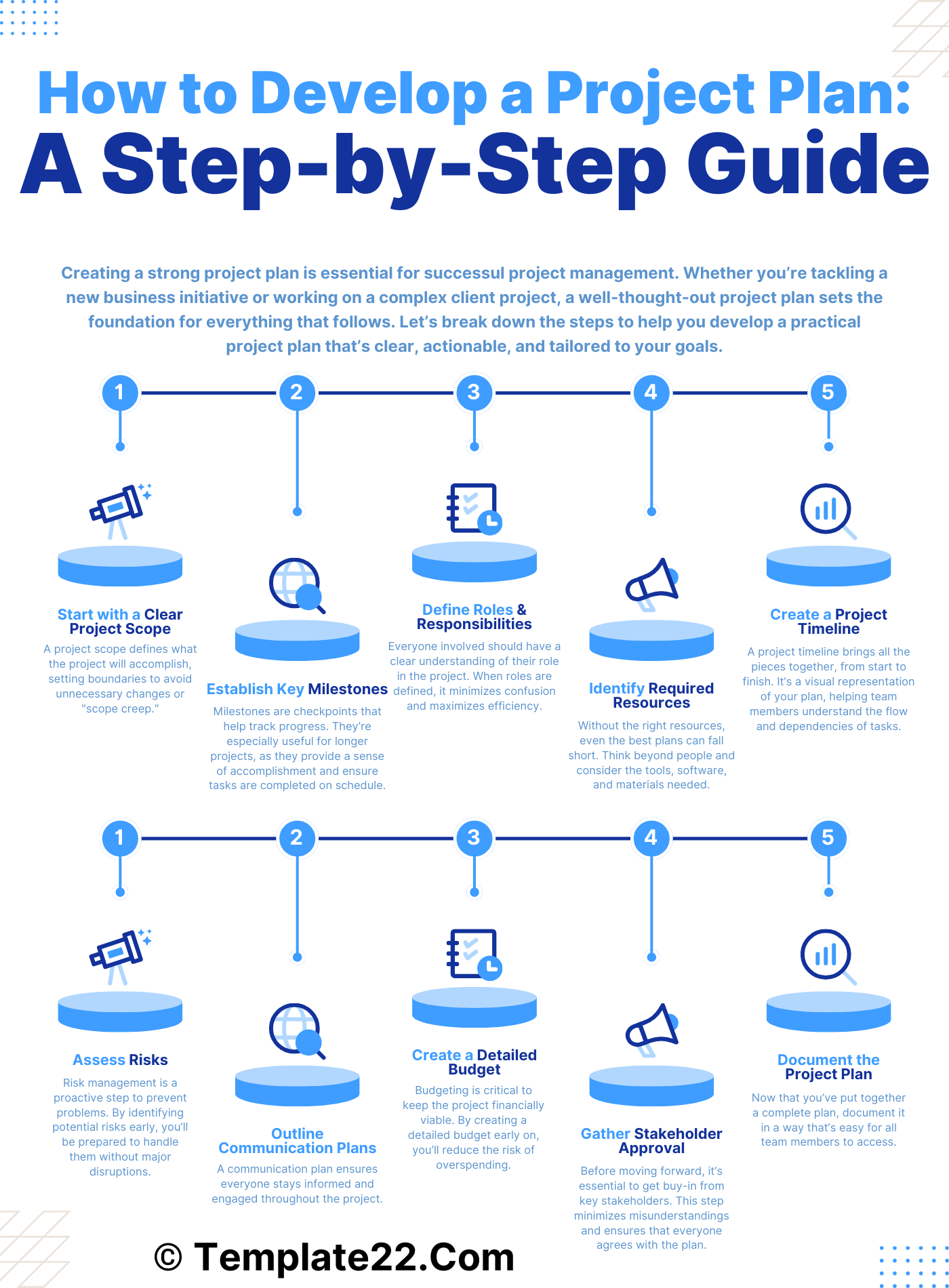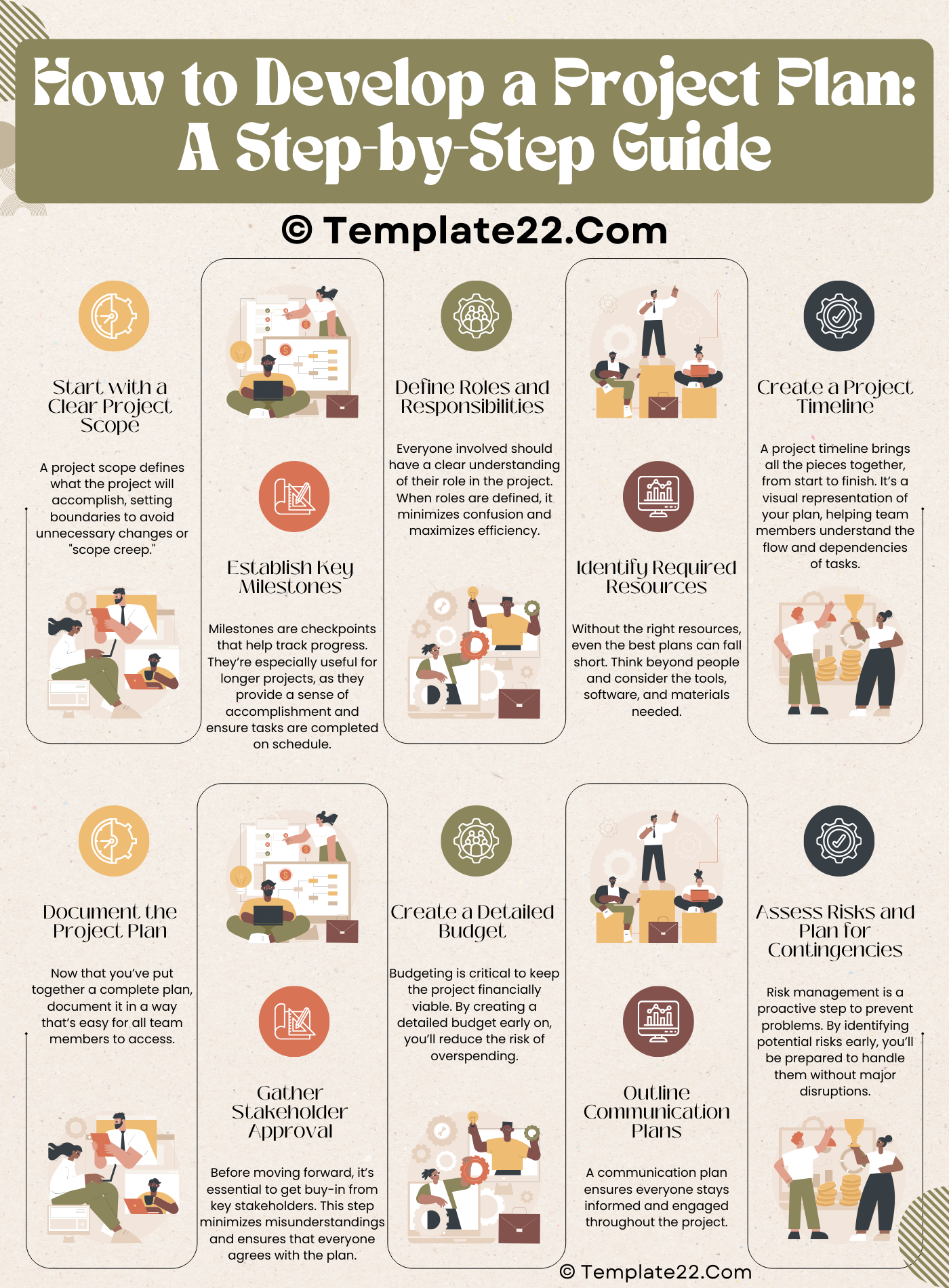 Creating a strong project plan is essential for successful project management. Whether you’re tackling a new business initiative or working on a complex client project, a well-thought-out project plan sets the foundation for everything that follows. Let’s break down the steps to help you develop a practical project plan that’s clear, actionable, and tailored to your goals.
Creating a strong project plan is essential for successful project management. Whether you’re tackling a new business initiative or working on a complex client project, a well-thought-out project plan sets the foundation for everything that follows. Let’s break down the steps to help you develop a practical project plan that’s clear, actionable, and tailored to your goals.
1. Start with a Clear Project Scope
A project scope defines what the project will accomplish, setting boundaries to avoid unnecessary changes or “scope creep.”
- Identify Objectives: Begin by listing the project’s goals and objectives. Ensure each objective aligns with your overall organizational goals.
- Define Deliverables: Specify what the end result will look like. Are you delivering a report, a new feature, or a full product? The more detailed, the better.
- Set Boundaries: Determine what’s within the scope and what’s not. If a task doesn’t directly support your objectives, it might be best to leave it out.
2. Establish Key Milestones
Milestones are checkpoints that help track progress. They’re especially useful for longer projects, as they provide a sense of accomplishment and ensure tasks are completed on schedule.
- Break Down the Project: Divide the project into phases and set milestones for each phase. This way, you can measure progress regularly and make necessary adjustments.
- Assign Due Dates: Attach realistic deadlines to each milestone. Avoid over-promising; consider the time needed for unforeseen delays.
3. Define Roles and Responsibilities
Everyone involved should have a clear understanding of their role in the project. When roles are defined, it minimizes confusion and maximizes efficiency.
- List Team Members: Identify who will be on the project team and what skills they bring. For example, a project might need developers, designers, or marketing experts.
- Clarify Responsibilities: Specify who is responsible for what tasks. If possible, assign a single point of contact for each aspect of the project, so there’s accountability.
CLICK HERE TO DOWNLOAD 300+ PROJECT MANAGEMENT TEMPLATES & DOCUMENTS IN EXCEL
4. Identify Required Resources
Without the right resources, even the best plans can fall short. Think beyond people and consider the tools, software, and materials needed.
- List Tools and Software: Will you need project management software, design tools, or data analysis programs? Make a list and confirm access for all team members.
- Budgeting: Resources often mean costs, so budget accordingly. Calculate how much each resource will cost and allocate funds from the project’s budget.
5. Create a Project Timeline
A project timeline brings all the pieces together, from start to finish. It’s a visual representation of your plan, helping team members understand the flow and dependencies of tasks.
- Map Out Tasks: Lay out tasks chronologically. Include smaller tasks that are often overlooked but crucial to the timeline.
- Set Dependencies: Some tasks depend on the completion of others. Identify these dependencies, so there are no bottlenecks along the way.
6. Assess Risks and Plan for Contingencies
Risk management is a proactive step to prevent problems. By identifying potential risks early, you’ll be prepared to handle them without major disruptions.
- List Potential Risks: Common risks include resource shortages, scheduling delays, or unexpected technical challenges.
- Develop Mitigation Plans: Create a “plan B” for each major risk. If a resource is unavailable, how will you proceed? Having alternatives keeps the project on track.
7. Outline Communication Plans
A communication plan ensures everyone stays informed and engaged throughout the project.
- Define Communication Channels: Decide where project updates will be shared. For example, will you use email, a chat platform, or project management software?
- Set Regular Meetings: Schedule check-in meetings, whether weekly or bi-weekly, to update the team on progress, discuss challenges, and plan for the coming days.
8. Create a Detailed Budget
Budgeting is critical to keep the project financially viable. By creating a detailed budget early on, you’ll reduce the risk of overspending.
- Identify Costs: List all costs associated with the project, from staffing and software to travel expenses and equipment.
- Track Spending: Use budget-tracking tools to keep tabs on expenses. Regular budget checks ensure you’re staying within financial limits.
9. Gather Stakeholder Approval
Before moving forward, it’s essential to get buy-in from key stakeholders. This step minimizes misunderstandings and ensures that everyone agrees with the plan.
- Present the Project Plan: Share a summary with stakeholders that includes scope, milestones, roles, and budget.
- Incorporate Feedback: Be open to input. Adjust the plan if needed, so it aligns with stakeholder expectations.
10. Document the Project Plan
Now that you’ve put together a complete plan, document it in a way that’s easy for all team members to access.
- Choose a Format: Use a document or a project management tool where the plan can be easily shared, updated, and referred to by the team.
- Make It Accessible: Ensure the document is stored in a shared space where everyone involved can access it anytime.
CLICK HERE TO DOWNLOAD 300+ PROJECT MANAGEMENT TEMPLATES & DOCUMENTS IN EXCEL
11. Execute and Monitor Progress
Once your plan is set and approved, it’s time to execute. Monitor the project’s progress and make adjustments as necessary.
- Track Milestones: Keep an eye on your milestones. Celebrate small wins to keep the team motivated.
- Adjust as Needed: If new challenges arise or priorities shift, don’t hesitate to adjust the plan. Flexibility is key to maintaining momentum.
Wrapping Up
Creating a project plan might seem like a lengthy process, but each step helps build a solid foundation. By defining the scope, setting milestones, planning resources, and preparing for risks, you’re setting your project up for success. Remember, a good project plan is both a roadmap and a safety net—it guides the team and safeguards against unexpected setbacks. So, take the time to develop a thorough plan, and your project will be well-positioned for success.



